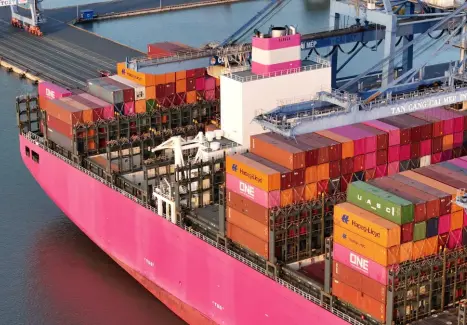Navigating customs clearance is a critical step in international ocean freight shipping. Failure to comply with regulations can lead to delays, fines, or even confiscation of goods. At Goodship, we understand the complexities involved and are committed to helping our clients ensure a seamless customs process. Here are four essential principles to ensure your shipments clear customs smoothly and efficiently.
1. Ensure Complete and Accurate Documentation
One of the most common reasons for customs delays is incomplete or incorrect documentation. For most goods, the required documents include:
- A customs declaration form (usually submitted in duplicate)
- A shipping authorization letter
- A commercial invoice and packing list (both in duplicate)
- An export verification form (depending on the destination country)
If the goods are subject to inspection—such as regulated products or branded items—additional documents may be required, such as intellectual property certificates or export licenses. For shipments cleared outside the production origin, a delegated inspection authorization letter may also be necessary.
At Goodship, we assist clients in preparing and verifying all documentation to minimize the risk of delays or rejections.
2. Use the Correct Commodity Codes
Commodity codes, also known as Harmonized System (HS) codes, are critical for determining tariff rates, taxes, and compliance requirements. Misclassifying goods—whether intentionally or accidentally—can lead to:
- Incorrect duty payments
- Increased scrutiny from customs authorities
- Legal consequences or penalties
It is essential to accurately assign and consistently use the correct 8-digit HS code across all documents, including invoices, packing lists, and customs declarations. Goodship offers expert guidance in code classification to help you avoid costly errors.
3. Declare All Goods Accurately and Completely
In an attempt to save time or reduce costs, some exporters may omit minor items from declarations. However, failing to declare all goods in a shipment is considered smuggling and can result in severe consequences, including:
- Rejection of the entire shipment
- Heavy fines and legal action
- Loss of shipping privileges or export licenses
Whether your shipment contains two items or two hundred, every product must be fully and accurately declared. Transparency is key to maintaining compliance and building trust with customs authorities.

4. Plan Ahead and Work with Experienced Partners
If you are working with a customs broker or freight forwarder, communication and timing are crucial—especially for shipments involving multiple origins or complex supply chains. Before shipping, confirm all details with your logistics partner, including:
- Carrier and vessel information
- Cut-off times and delivery locations
- Required documents and point of contact
- Associated costs and timelines
At Goodship, we provide end-to-end support—from document preparation to customs coordination—helping you avoid last-minute issues and ensuring your goods move seamlessly across borders.
Why Partner with Goodship?
Customs clearance doesn’t have to be a bottleneck. With careful preparation, accurate documentation, and the right partner, you can keep your supply chain efficient and compliant. Goodship offers tailored ocean freight services, including customs brokerage, documentation support, and real-time tracking, to simplify international shipping for businesses of all sizes.

 Good
Good
 Aug 05 2025
Aug 05 2025


 Home
Home





 Email:
Email:
 Address: 216, Building A1, Fuhai Industrial Zone, Fuyong Community, Fuyong Street, Baoan District, Shenzhen, China
Address: 216, Building A1, Fuhai Industrial Zone, Fuyong Community, Fuyong Street, Baoan District, Shenzhen, China



